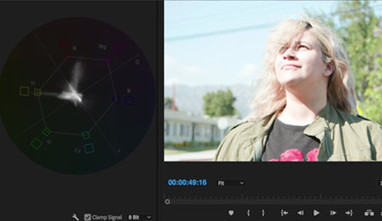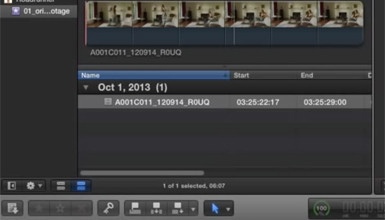final-cut-pro
Tutorials & Guides
Canon's C200 employs a new recording format, Cinema RAW Light, that allows users to record DCI 4K RAW files directly to the camera's internal CFast card slot.
Tutorials & Guides
Just over three years ago, I wrote up an article on how to import Canon C300 footage into various NLEs. The C300 Mark II has been out for some time now, but it's just recently that all the major software applications have supported it.
Tutorials & Guides
We've discussed many of the advantages of shooting Log C on the ALEXA before, but often one of the biggest roadblocks is the preconceived notion of an overly complex workflow. While this can be true if you need to grade the majority of your footage, often times (especially if you nail your exposure), a simple translation is all that is necessary.
Tutorials & Guides
One of the more interesting features of the Sony F55 is its ability to record in 4K XAVC video while simultaneously recording in HD. This gives you the option of editing right away in the Sony MPEG2 HD format as a proxy, and then linking back to the 4K XAVC compression for finishing. Sounds great right?
Tutorials & Guides
With every new camera, come many new questions about workflow. The term "workflow" can be fairly broad, but today I am looking at importing Sony F5/F55 footage into various non-linear editing systems (NLEs). Both the F5 & F55 can record in MPEG2 (XDCAM), XAVC and HDCAM SR formats internally. With the addition of the AXS-R5 recorder, they can also record in Sony Raw. This article is focused on MPEG2 and XAVC, but be sure to keep an eye out for future blogs on working with Sony Raw and HDCAM SR.
Tutorials & Guides
In this third part of my series on the Sony F65 Workflow, I go over how to use Sony's SR Compression format. In the latest firmware revision, the F65 is able to record in the SStP (Simple Studio Profile) video format, also known as the SR Compression format. This is the same format found in the F35 and other HDCAM SR recording cameras. Right now, the F65 can record in the SQ Mode (at 440 Mbps) to the SR Memory cards, with HQ and Lite options available in the future.
Tutorials & Guides
With every new camera, comes many new questions about workflow. The term 'workflow' can be fairly broad, but today I am looking at importing C300 footage into various non-linear editing systems (NLE). The C300 uses the same workflow as the Canon XF series of cameras (which includes the XF305, XF300, XF105 and XF100), because it records in the same format. However, the tools for importing the footage have been updated by Canon. Below, I outline how to ingest footage onto a hard drive, and how to import into Avid Media Composer, Final Cut Pro 7, Premiere 5.5 and Final Cut Pro X. Keep reading for a brief how-to on each process.
Tutorials & Guides
Upon hearing the term Asset Management System most production people think of a tape library or a system to keep track of equipment. In today's world of tapeless acquisition, our master assets are digital, and a comprehensive method to keep track of them is usually referred to as a Digital Asset Management system (DAM). The term Media Asset Management System is also widely used, and for our purposes they are interchangeable.






















